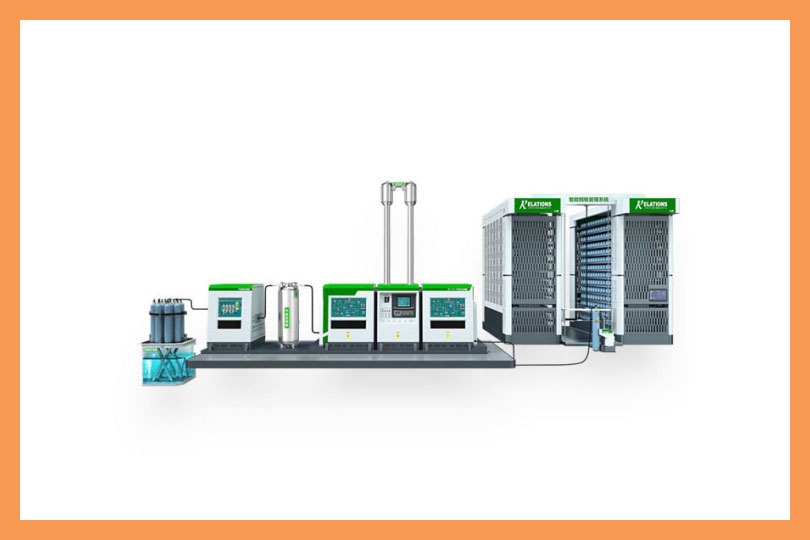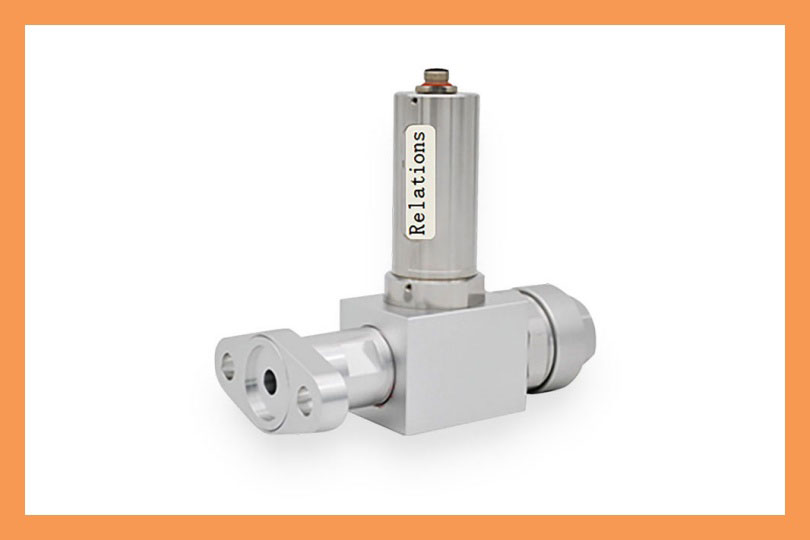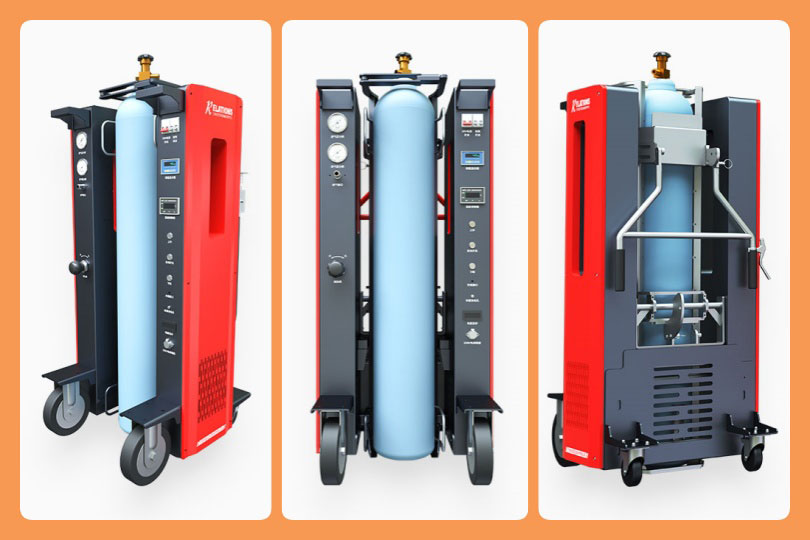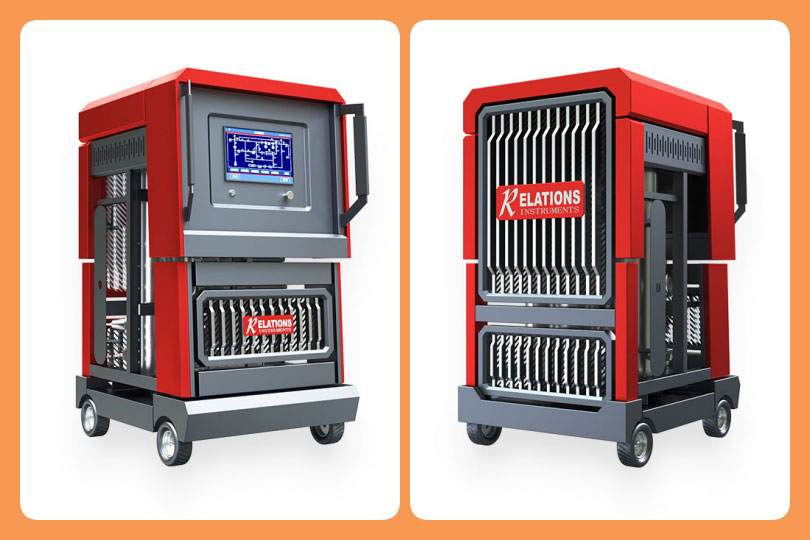SF6 Gas Recovery and Disposal Equipment for Power Plants
Date
2025-11-13
[email protected]
Website
www.sf6gasdetector.com
Get Solutions And Quotes
SF6 Gas Recovery and Disposal Equipment for Power Plants
Sulfur hexafluoride (SF6) has long been the industry standard for insulating and quenching electrical arcs in high-voltage power equipment, including gas-insulated switchgear (GIS), circuit breakers, and transformers. However, while SF6 is incredibly effective as an insulation medium, it is also a potent greenhouse gas with a high global warming potential (GWP). As such, power plants and electrical utilities must adopt responsible practices for managing SF6 throughout its lifecycle, including recovery and disposal.
This article explores the importance of SF6 gas recovery and disposal equipment in power plants, the processes involved, and the technologies that are making these practices more efficient and environmentally responsible.
Why SF6 Gas Recovery and Disposal Are Critical
SF6 is an indispensable component in modern electrical systems due to its superior dielectric and arc-quenching properties. However, its use is not without environmental concerns. SF6 has a GWP that is approximately 23,500 times greater than carbon dioxide (CO₂) over a 100-year period. As such, it is imperative that power plants not only ensure the efficient use of SF6 but also develop methods to recover, recycle, and dispose of it safely to prevent its release into the atmosphere.
Key reasons for adopting SF6 recovery and disposal practices include:
-
Environmental Protection: By recovering and recycling SF6, power plants can reduce their carbon footprint and comply with international regulations aimed at limiting emissions of greenhouse gases.
-
Regulatory Compliance: Various global regulations, such as the Kyoto Protocol and the European Union’s F-gas Regulation, mandate the recovery and proper disposal of SF6 to curb its environmental impact. Failure to comply can lead to hefty fines and damage to corporate reputation.
-
Cost Efficiency: SF6 is expensive, and recovering and reusing it can significantly reduce operational costs. Recycling SF6 allows utilities to avoid purchasing new gas, ensuring cost savings while minimizing waste.
-
Safety and Operational Integrity: Ensuring the safe disposal and recovery of SF6 helps maintain the integrity and safety of electrical equipment. Improper handling of SF6 can lead to equipment failure, leaks, or hazardous situations for personnel.
How SF6 Gas Recovery and Disposal Works
The recovery, recycling, and disposal of SF6 gas in power plants is a multi-step process that requires specialized equipment and careful management. Here’s a breakdown of the typical steps involved in the process:
Gas Recovery
The first step in SF6 management is the recovery of gas from electrical equipment. Recovery equipment typically includes vacuum pumps and storage cylinders. The process begins by isolating the equipment (e.g., circuit breakers or GIS) from the power grid. Afterward, the gas is extracted through a vacuum system designed to handle SF6 safely. This process also includes filtering the gas to remove any contaminants or impurities, such as moisture, particulate matter, or chemical decomposition products.
Gas Purification and Recycling
Once the gas is recovered, it can be purified and recycled for reuse. This step is particularly important because SF6 is costly and difficult to obtain, so reusing the gas helps reduce both costs and environmental impact. Specialized filtration systems remove moisture, acids, and other impurities, ensuring that the SF6 gas meets the purity standards required for future use in electrical equipment. After purification, the gas is stored in pressurized cylinders for later use.
SF6 Disposal
In cases where SF6 cannot be recycled, such as when it has reached an end-of-life state or has been contaminated beyond reuse, it must be safely disposed of. SF6 disposal typically involves converting the gas into non-toxic and environmentally safe substances through processes like chemical neutralization or incineration. Some specialized SF6 disposal systems use a thermal treatment process, where the gas is heated to high temperatures to break it down into its constituent components, including sulfur and fluoride, which are then safely neutralized.
Leak Detection and Prevention
Another essential aspect of SF6 gas management is the detection of leaks in power equipment. SF6 leak detection systems monitor the concentration of SF6 in the air and in the equipment. If a leak is detected, the affected equipment can be isolated, and the gas can be recovered before further release. Regular leak testing ensures that SF6 gas is contained within the equipment and reduces the potential for harmful emissions.
Types of SF6 Gas Recovery and Disposal Equipment
To efficiently recover, recycle, and dispose of SF6 gas, power plants rely on specialized equipment. There are several types of SF6 gas recovery and disposal equipment available, each designed for different stages of the SF6 lifecycle.
SF6 Gas Recovery Units
These units are designed to extract SF6 gas from high-voltage equipment after it has been disconnected from the power grid. Recovery units consist of vacuum pumps, gas storage tanks, and filtration systems. They work by evacuating the SF6 from the equipment and storing it in a sealed container for purification or reuse.
SF6 Gas Purifiers and Filters
After SF6 has been recovered, it may contain contaminants such as moisture, sulfur compounds, or particles. Gas purifiers are used to filter out these impurities. The purification process involves passing the gas through special filters, drying agents, or chemical scrubbers that remove harmful components, ensuring the gas is safe for reuse.
SF6 Gas Recovery and Recycling Stations
For large-scale operations, power plants use SF6 gas recovery and recycling stations. These centralized systems are capable of recovering, purifying, and recycling SF6 from multiple equipment sources. These stations also have the ability to compress and store SF6 gas, making them an integral part of a power plant’s SF6 management strategy.
SF6 Disposal Systems
When SF6 is no longer reusable, it must be disposed of in an environmentally responsible manner. SF6 disposal systems typically include thermal treatment units or chemical neutralization systems, which break down SF6 into non-toxic byproducts. These systems are designed to handle SF6 safely and ensure it does not contribute to greenhouse gas emissions.
Benefits of SF6 Gas Recovery and Disposal Equipment
Investing in SF6 gas recovery and disposal equipment offers numerous benefits for power plants and utilities:
-
Cost Savings: SF6 recovery and recycling reduce the need to purchase new gas, leading to significant cost savings over time. Additionally, the equipment required to recover and recycle SF6 is a one-time investment that will pay off as SF6 is reused.
-
Regulatory Compliance: As SF6 is a regulated substance, using recovery and disposal equipment ensures compliance with local and international regulations governing SF6 emissions. By minimizing SF6 leaks and waste, power plants avoid fines and penalties.
-
Environmental Protection: The recovery and recycling of SF6 help reduce the environmental impact of power plants. By preventing the release of SF6 into the atmosphere, utilities can significantly decrease their greenhouse gas emissions and contribute to global efforts to combat climate change.
-
Operational Efficiency: The use of SF6 recovery and disposal equipment helps maintain the reliability and efficiency of power plants. By preventing SF6 leaks and ensuring that gas is available for future use, the equipment ensures that high-voltage systems operate at peak performance.
SF6 gas recovery and disposal equipment plays a crucial role in managing the environmental and operational impact of SF6 in power plants. As SF6 continues to be a vital part of electrical systems, it is essential to adopt responsible practices for gas recovery, recycling, and disposal. By investing in state-of-the-art equipment and adhering to industry best practices, power plants can reduce their environmental footprint, comply with regulations, and maintain the safety and reliability of their electrical systems. With continued innovation and improvements in recovery technologies, SF6 management will continue to evolve toward a more sustainable future for the power industry.







